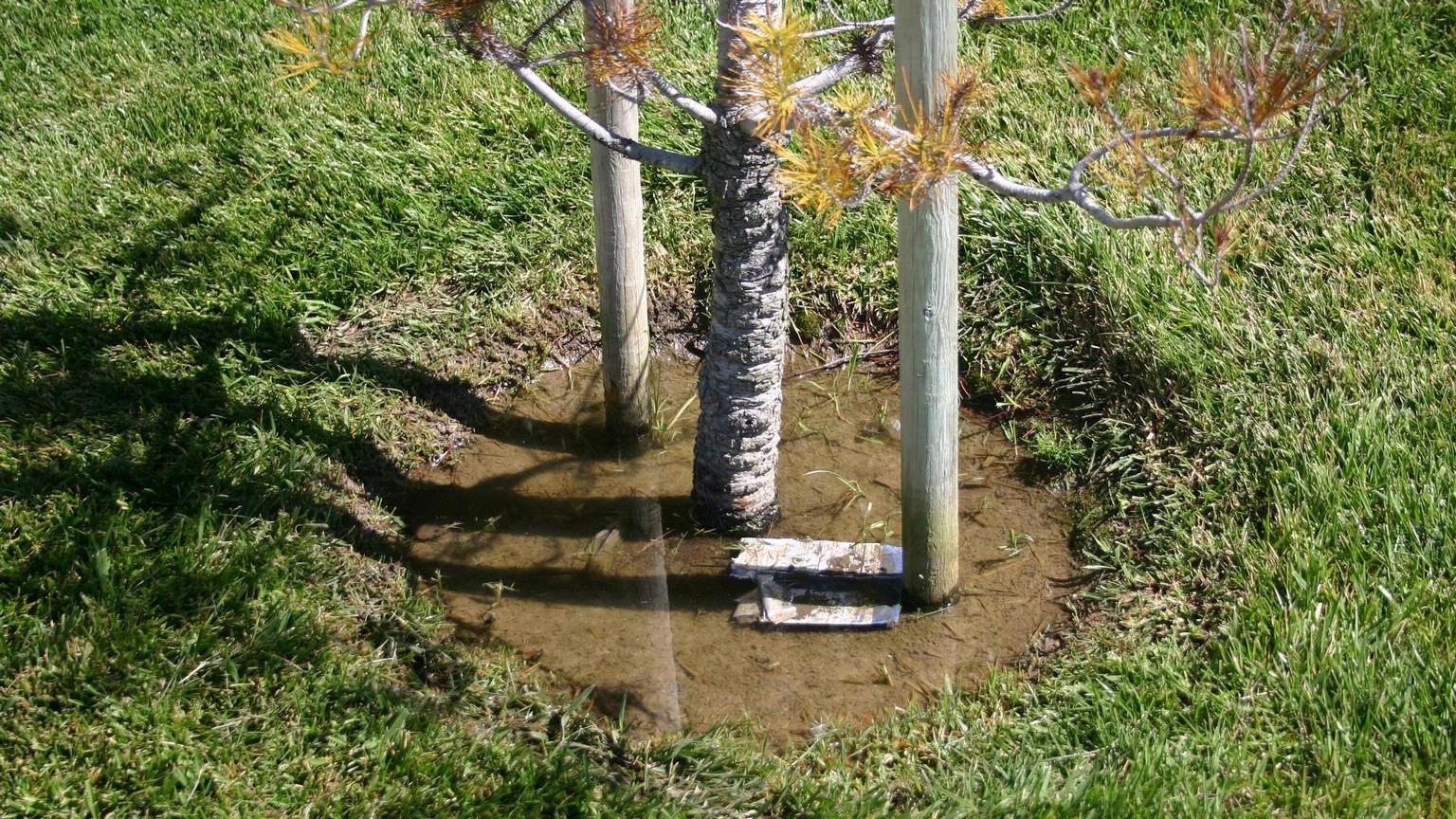Too much water can be just as damaging as too little. Many plants cannot tolerate 'wet feet'. Excess moisture can result if the soil is poorly drained, naturally wet, or overwatered.
Climate change is impacting the frequency and types of rain events we are experiencing in Maryland. Data shows that much more rain is falling as downpours now than in the past.
Problems caused by excess water
- Excess soil moisture can reduce oxygen in the soil, damage fine root hairs, and render the root system unable to absorb water.
- Plants exposed to excess moisture show the same symptoms as plants under drought stress. The primary symptom of excess moisture is yellowing of lower and inner needles.
- If excess water continues, plants may wilt, followed by scorch, needle drop, dieback, or death.
How to minimize problems caused by too much soil moisture
Whether the excess water in the soil is caused by poor site conditions or unexpected flooding events, the symptoms often appear well after the damage has occurred. This makes correcting the problem retroactively very difficult if not impossible, especially for mature trees. Here are some tips for avoiding excess moisture problems in the future.
- Select plants that tolerate soil and moisture conditions at a specific site.
- Group plants with similar water requirements together.
- View Planting a Tree or Shrub to ensure proper planting height.
- Conduct a test to check for good soil drainage. Make a hole 18 inches deep and fill it with water. The water level should drop 3 inches every half hour and be completely drained within 24 hours.
- Help to improve poorly drained soil by adding organic matter to the entire planting bed, not just the planting hole.
- View Watering Trees and Shrubs for proper watering practices. Take care not to drown your plants.
- Make sure downspouts drain away from the house.
- White pines, azaleas, rhododendrons, and yews, are very prone to root decay and become susceptible to fungal root diseases when grown on wet sites.
How to modify the existing site to improve soil drainage
- Identify areas that stay wet to determine the causes and possible solutions.
- Take the time to observe the flow of water after heavy rain or irrigation.
- Correcting a problem can be as simple as removing a little soil or mulch away from one spot to let the water flow away naturally.
- In some cases, a total regrading of the site may be necessary.
